
Flatulence, wildfires and bogs. The madness of measuring methane.
I have often been told, especially recently, that you can’t be an environmentalist if you eat meat. On the face of it seems a simple conclusion; livestock emit methane and methane is a potent greenhouse gas that’s leading to global warming. But anybody that works with natural systems should understand very well that nature is complex and self-balancing – it’s just not that simple!

Humans are responsible for huge annual greenhouse gas emissions, (1) if we want to default to a simplistic reductionist viewpoint then the obvious thing to do would be to reduce the human population, after all we are the ones that have caused the large-scale destruction of the of the world’s habitats to feed cattle in feedlots, poisoned the seas with our fertilisers, and overgrazed our hillsides to the point they are ecological deserts. The livestock didn’t do it on their own! There are a few who may have made this connection and decided against having a family for environmental reasons, there are many more who won’t make this commitment – myself included.
So, quietly flowing under the vocal self-deprecation of environmentalists against their own species, is the knowledge that we’re here to stay. Humans, unfortunately, must eat.
But the way in which we produce our food has veered horribly off track. We have become disassociated from our food systems. The development of globalisation means we have no clue of the impact of the prettily packaged ‘chilli non carne’ (a new Vegetarian ready meal by M&S) is having on the local communities and the environment from which it was grown – let alone how it hurts the livestock and wildlife involved in its production.
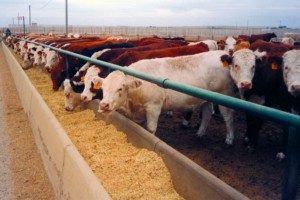
It’s far easier to cling to a simple idea that if we remove herbivores from the landscape then we can carry on with our highly consumptive lifestyle. As long as we eat soy burgers instead of beef burgers and retweet messages about how we should plant more trees then we’ll be okay. Well, it’s not enough. Not by a long chalk. This decoy is leading to planetary destruction and fast.
Here’s why.
As mentioned in this superb blog, rainforests are one of the largest sources of ongoing methane emissions, peat bogs wetlands and all wild ruminants too are significant contributors to atmospheric methane along with insects and molluscs and many more creatures. Unless you cherry pick your logic (like some of the more feral environmental campaigners) then shouldn’t we treat all methane sources the same way we treat the 5-8% of enteric methane produced by ruminant herbivores – try and eliminate them?
It turns out we’ve already been doing this quite effectively. In the UK 45% of the original peat bogs have been destroyed and the planet has lost 50% of its forests – (2) and 60% of our large herbivores are threatened by extinction.(2a) Why then has this led to an increase in atmospheric methane from our stable pre civilisation levels of 700 parts per billion to 2400ppb, not a decrease?
Some of this can be attributed to an increase in fossil fuel methane sources, especially fracking. (3) NASA found that most of the huge rise in global methane emissions in the past decade is in fact from the fossil fuel industry – and that this rise is “substantially larger” than previously thought. (4)
This absolutely must be reduced, but an important factor is that it’s the other functions of those important habitats that have a regulatory effect on methane oxidation. We’re accounting for the ‘outs’ and not subtracting the ‘ins.’ You can’t explain nature’s functions with simple accounting, unless the nature has been removed from food production system.
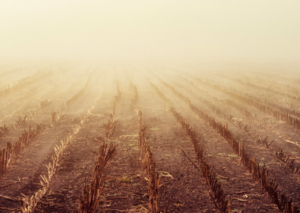
The planet’s ecosystem – made up of many habitats and associated species – both emit and absorb methane. A healthy soil, for instance, contains many microorganisms all playing a complex role in nutrient cycling and regulating the gases of the atmosphere.
Methanotrophs (prokaryotes that metabolize methane as their only source of carbon and energy) are found in aerobic healthy soils, like those of the plains of Africa and America that once supported more wild ruminants than we have domestic livestock today. The first step of the complex but highly effective cycling of methane happens right under the noses of the grazers as they munch.
What these grazing animals eat will undoubtedly influence how much methane they emit too. Although it’s a bad idea simply thinking of a cow as a methane generating machine and studying it in a setting that’s out of context (in a shed being fed foods that its not designed to eat) some studies have shown that adding supplements such as garlic, fish oil, or herbs such as oregano and Birdsfood trefoil can reduce the volume of methane that cows burp and fart.
Plants growing in healthy soils are connected through mycorrhizal fungi networks which increase the availability of important nutrients and pass these up the food chain to the animals grazing them. The nutrient composition of each plant will vary depending on the microbial populations and structure of the soil as well as the number and type of other species in the sward. The composition of nutrients changes significantly if the plants – either grains or grasses – are cut and stored, rather than grazed as growing plants. (5) The nutrient composition of grasses therefore shouldn’t be studied out of context, and as far as I am aware there are no truly holistic studies of the methane outputs of wild herbivores when they are grazing healthy native ranges. With an understanding of how clever nature creates multiple checks and balances, it doesn’t seem too much of a stretch to assume that if a native pasture full of potent herbs is grazed directly this could influence the gut microbes in a herbivore in a way that could reduce their methane output.
Soils are thought to ‘bank’ up to 15% of the world’s methane (6), but not all soils are healthy. Soils structure and healthy microbial populations are severely damaged by agricultural practices such a tillage, use of artificial fertilisers, bare fallows and the use of pesticides – all practices more commonly used in plant food production. (7) (8) Soils only function well when animals are part of the life cycle.
Woodland soils are healthy when they are part of a diverse food web that includes birds, small bands of grazing and browsing herbivores, disruptive omnivores such as badgers and wild boar and an army of tiny shredders and decomposers helping to cycle minerals and support the soil microbiome.
On grassland habitats, through the process of grazing, dunging (including the depositing of internal microbes) and surface trampling, the microbes – a billion or more in every teaspoon – are provided with the necessary food and stimulation to thrive. These microbes help sequester carbon and oxidise nitrous oxide in the process too.
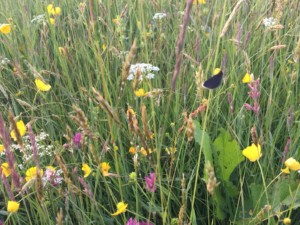
Take the grazing animals out of the equation under the false impression that you need to ‘rest’ the environment to let it regenerate, and the ecosystem processes slow – especially in the 2/3rds of the globe with seasonal rainfall.
Grasses can’t defoliate like trees as they co-evolved with grazing animals who did the job for them. Without grazers to cycle the nutrients, the minerals become bound in rank grasses slowing plant growth. The photosynthetic process that drives carbon sequestration and feeds the microbial bridge reduces, and instead of a diverse and healthy grassland we get a tinderbox of dry dead material with an overshadowed sward of reduced biodiversity.
What happens next is becoming all too well known. The tinderbox inevitably receives a spark and huge acreages go up in flames. Death, destruction and bare soils follow. Bare soil with no photosynthetic capacity, a dysfunctional microbiome and no ability to oxidise methane, sequester carbon or support wildlife. This is not the wildlfire we would experience in prehistoric times, nowhere in nature would we see the expulsion of herbivores that could result in such an enormous build-up of dead material – mother nature would not make this mistake!

The UK is not much different. Although our wet climate prevents the likelihood of huge wildfires, our degraded uplands have lost their mixed large herbivores, trees and associated biodiversity. The soil structure has degraded leaching all the soluble nutrients into the sea, accelerated by the high rainfall, aerobic microorganisms have died and anaerobic decay processes have replaced it. This peat building process does sequester carbon, but slowly over thousands of years; the methane oxidising capacity is instead replaced by a methane-emitting bog. (course)
Over the last couple of hundreds of years, these peat bogs have been overgrazed leading to a loss of important stored carbon. The greater loss, however, is the healthy soil of prehistoric times that could regulate and balance all the greenhouse gases and kept our planet cool. Clever earth had other checks and balances up her sleeve to deal with big methane emitting events like volcano eruptions and natural wildfires.
As described in this paper on Methane’ atmospheric chemistry by climatologist Walter Jehne;
”atmospheric chemistry has long fully verified that most of the methane, carbon monoxide, poly aromatic hydrocarbon volatiles and carbon particulates that are emitted into the air naturally and as our pollution are rapidly oxidised to carbon dioxide (CO2) by reactive hydroxyl ions (OH-) that are also naturally produced in vast quantities in the atmosphere.”
”these hydroxyl ions are produced naturally as ultraviolet energy in sunlight energises oxygen (O2) molecules in the air to turn them into ozone (O3) which then rapidly photo-oxidize water vapour molecules (H2O) into two highly reactive negatively charged hydroxyl ions (2OH-) These hydroxyl ions actively oxidize any reduced carbon compounds in the air such as methane, carbon monoxide, or poly aromatic carbon into CO2, naturally cleaning up the atmosphere.”
So what’s gone wrong with this elegant natural system that kept planet earth in balance for so long through huge volcanic eruptions and with more herbivores, bogs and rainforest belching out methane than we currently have today?
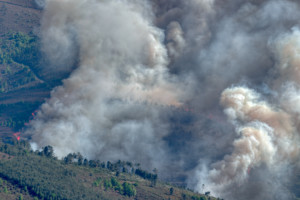
Forest fire in the Courel range, O Incio, Lugo, Galicia
We may have saturated the natural system with other pollutants.
We now burn – by accident and for land management purposes – 480 million hectares of land annually (9). The amount of methane, carbon monoxide and carbon dioxide released into the air during a fire depends on many factors including the density of the trees and the damage to the different types of soils under either the forest of grasslands.
A stark example of the potential impact of wildfires on the planet are the devastating wildfires of Indonesia in 1997 and 1998. The land use changes that led to the fires were a combination of industrial-scale logging, draining peatlands for conversion to oil palm and fast-growing tree plantations, and a massive government program to drain swamps for conversion to rice paddies. These land use changes coincided with a year of drought led to wildfires that are thought to be the worst recorded fires in the last two centuries.
The fires severely damaged the carbon-rich peat soils. As a result, the Indonesian fires were estimated to have released between 0.81 and 2.57 gigatons of carbon—between 13 percent and 40 percent of the world’s annual emissions at the time. (10)
These wildfires produce other pollutants, such as carbon monoxide that may be diverting the hydroxyl ions from oxidising methane. The additional particle pollution caused by fires is inevitable, reducing the capacity of the ultraviolet radiation to turn the oxygen into ozone to kickstart the process of methane oxidation.
These destructive fires, which are considered an ‘act of God’ not a result of humans mismanagement of a natural system, aren’t even accounted for in each counties’ emissions calculations!
We’ve damaged the hydrology of the planet.
Water and sunlight are both required to sustain the production of the methane oxidising hydroxyl ions. Water vapour is also a greenhouse gas responsible for 95% of the heat dynamics of the planet.
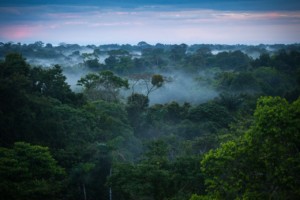
Through poor management of herbivores, especially in the dry-lands of the world, what was an important natural biological stimulant (grazing animals) have become a tool of mass desertification. Set stock grazing of livestock that doesn’t allow for proper recovery of the roots and shoots of grasses, weakens grassland plants creating bare soil. Bare soil leads to accelerated evaporation and potential erosion – desertification quickly follows.
These bare dry capped lands shed most of the water that falls upon them in the short sharp rainy season. In the dry season the soil with no vegetative armour produces vast quantities of dust in the dry season. Over 3 billion tonnes of dust billows into heat hazes annually – a hugely heating environmental problem.
What’s worse is that they prevent the solar ultra violet energy that is required in the process of methane oxidation in the atmosphere. In the pursuit of feeding humans and housed livestock plant foods, we also create vast acreages – 13.4 billion hectares – of man-made deserts in the form of monoculture annual croplands many of which remain bare for several months of the year to produce plant foods.
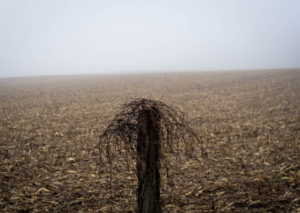
The water vapour in the atmosphere that’s required in the process of methane oxidation is produced from moist soils and transpiring vegetation. On these bare fallows, weeded croplands, scorched acres and desertifying lands, the capacity of the land to soak up, hold onto, and transpire moisture is dangerously reduced.
When we move away from the security of counting emissions to the larger and far more important understanding of whole system function, you can soon clearly see the absurdiry of thinking that a simple move from an omnivore diet to a vegan diet offers any possible solution to the urgent need to support and enhance natures natural GHG clean up processes. In fact it’s more likely to impede them.

If following a plant based diet was a passive vote toward a better future for our planet then I would have no objections to anyone adopting this way of life. I am grateful for the movements efforts to address our disastrous and cruel intensive livestock production systems.
But it’s not harmless.
Many of those following the diet are activist campaigners who are gaining a louder and louder voice among an easily influenced public audience. Their distracting insistence that a simple shift to monoculture based food systems will be a solution to our climate issues is terrifying, especially in light of a very pressing problem;
‘’There are at least 4000 billion tonnes of carbon currently stored in the Earth’s soils and frozen tundras as well as 10-15,000 billion tonnes of carbon stored in the frozen marine methane hydrates. By comparison the earth’s atmosphere currently holds some 750 billion tonnes of carbon.
It follows that any abnormal increased emission of methane from either of these sources could rapidly double atmospheric carbon levels resulting in not just climate change but the catastrophic rapid extinction of most terrestrial life. There is no ecological greater risk or reality facing humanity. These methane emissions and risks are, real, intensifying now and dwarf those from grazing animals” (10)
Perhaps because I have young children more than any other reason, this matters to me.
The idea that simply switching to a vegan diet will solve the problem is misguided. Arable crops are mostly produced from bare degrading soils with zero methane oxidising or planet cooling capacity. Is this a better choice than foods grown from grazed, hydrated perennially green lands?
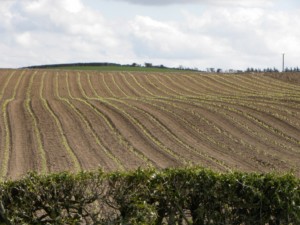
Humans have an essential role to play. We have messed with this planet to the point we cannot simply walk away. We must step up and accept our new role as a ‘conscious key stone species’ before it’s too late.
Through ecologically based agricultural systems and rewilding that is underpinned with an understanding of the importance of herbivores and the predator prey relationship, then we can create a bright future for humans living within a truly diverse global ecosystem.
Caroline Grindrod
Please share this article if you like the content.


No Comments